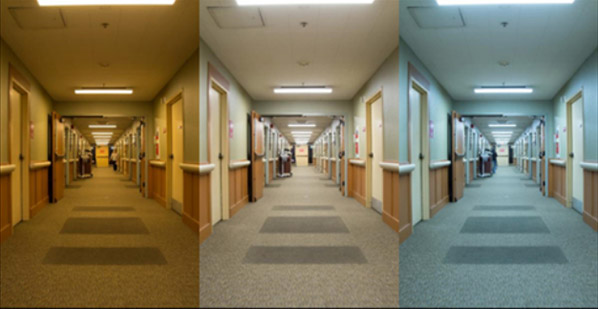Pacific Northwest National Laboratory (PNNL) has released the results of the DOE-funded study, Measuring Light Exposure and its Effects on Sleep and Behavior in Care Center Residents. The study looks at the proposition that spectrally tunable and output-selectable LED lighting may improve dementia behaviors and sleep issues, which are common among residents of nursing-care centers.

Researchers conducted the study at the ACC Care Center, a 99-bed nursing center in Sacramento, CA, with a large population of patients with dementia. The study involved a partnership between experts in lighting design, environmental design and light measurement; experts in measuring resident behavioral outcomes in nursing centers; and leaders from a nursing center with previously installed programmable, tunable LED lighting.
Three long-term-care corridors featured lighting settings that mimicked the facility’s former fluorescent lighting (static lighting) or that were programmed to change in spectrum and intensity (tuned lighting). The nighttime lighting mode had overhead LED lights delivering 2700K (warm) ambient light, dimmed to 21% output. The spectrum was designed to minimize blue-cyan energy—the portion of the visible light spectrum most associated with human circadian melatonin levels and, as such, affects sleep quality and duration.
The daytime setting had 100% output at 6500K (cool), designed to maximize energy emitted in the blue-cyan range. A transition state between the nighttime and daytime settings had 4100K and 100% output.
The results show that residents experienced fewer nighttime sleep disturbances when their corridors were assigned to the tuned and dimmed lighting. Other findings center on lessons learned for care-facility operators, lighting designers, technology developers and standards developers, as well as recommendations for future research.
Read more about this study here: https://bit.ly/2UTww9D
